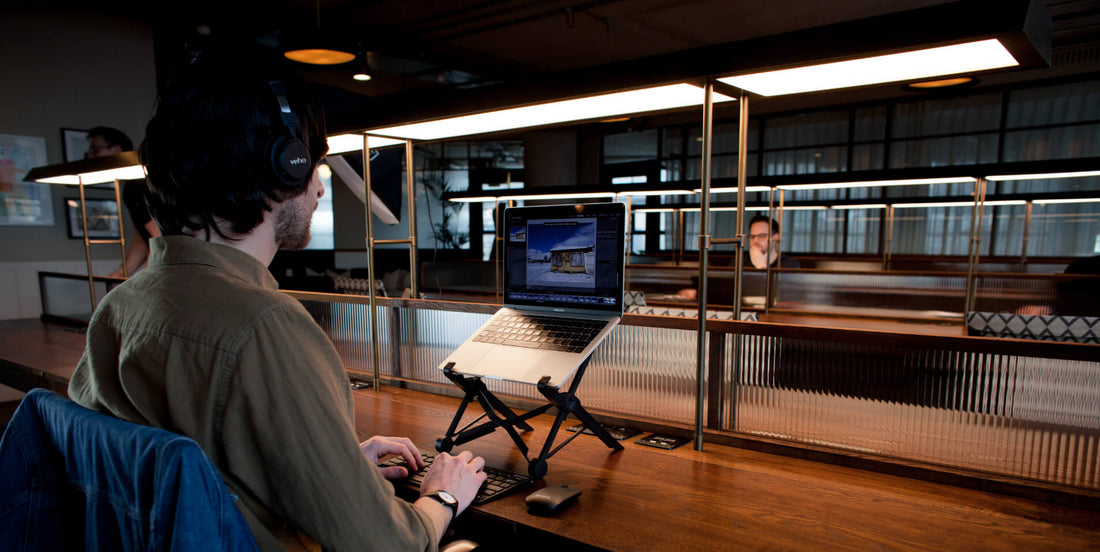Creating a Culture That Promotes Wellbeing For All

Nicole Copestake

As an ergonomic consultancy, specialising in preventing and reducing back pain in the workplace, we have provided 1,000’s of remote homeworking assessments since the pandemic started, both in the UK and Globally.
During this time, we have been seeing increasingly complex issues. The most common of which are shoulder, neck, wrist and lower back pain, headaches and visual fatigue. These have not been helped by the combination of poor working practices, stress and a reduction in movement levels throughout the day. We have also been witnessing an exacerbation of discomfort from other underlying health conditions such as arthritis and scoliosis and even a few cases of internal ulcers.
Ergonomics is a multi-disciplinary science. It combines biomechanics, anthropometrics and psychology. This allows us to create solutions around each individual’s issues.
Humans are complex, so we bring a multi-faceted approach to our expert assessments accordingly. We often find we are not only addressing physical issues, but a number of mental health problems too. These include feelings of loneliness, a lack of connection with their team and a reduction in a sense of agency.
As an independent company, we often act as a sounding board and are asked to represent employee concerns or signpost on to the relevant company support.
This gives us a unique perspective on the wellbeing interventions that are required and address them accordingly.
How to create lasting improvements for wellbeing?
All of your employees will be at a different stage in their own wellbeing journey, with some requiring education and support from the very start and others already embracing wellbeing into their daily lives.
A lot of wellbeing programs are either too random or generic. If a program is to be robust, it needs to be fully considered, bespoke, continuous and flexible.
Critically, a wellbeing program needs to be embedded into a company’s culture.
One way to do that is to include it in the onboarding process, as well as demonstration of adoption by management, to create trust.
What should a good wellbeing program include?
Most wellbeing programs end up being used by only 5 % of the workforce. In order to provide a wellbeing program that is attractive to the full range of your workforce, you first need to find out what is important to all.
So, before any program is implemented:
- Analyse the data to identify any particular areas of concern
- Research your employee’s current requirements
- Analyse the results and create ideas to address these
- Conduct a diverse focus group to discuss these ideas and encourage agency at the same time
- Implement a varied wellbeing program that incorporates the different areas of concern and interests. Note, that at its core, the HSE DSE Act specifies an ergonomic assessment for all, whether a home or office worker.
What are the main wellbeing issues to address?
The two biggest causes of sick leave are stress and back pain. These are both complex areas that interlink with each other. They therefore need an approach that addresses all of the causal factors. These include mental health and communication support, posture education and guidance, movement advise and nutrition (key for a healthy body and mind):
Why is Ergonomics Important?
Ergonomics is an essential tool in any wellbeing program, as well as being required by law.
During Covid 19, many working from home have been struggling with their back health, as well as their physical and mental health more generally.
Preventing back pain from occurring in the first place is optimal. This is because the body adapts with long term pain making it a longer recovery process.
Our backs are healthiest when we are either sitting in upright postures or moving. Static and awkward postures stop the flow and long term, can cause changes that increase our risk of musculoskeletal pain. Ergonomics is all creating simple but highly effective changes that reduce your risk, empowering people to know how best to look after their back health when working.
Conclusion
Ergonomics forms the building blocks of our approach, with reference to exercise, nutrition, stress management techniques and signposting on for physiotherapy if required. We are all about creating a road map to recovery which can be missed if looking at each area on its own.
This joined up approach helps us to get to the root of the issue, to identify whether any past injuries might be impacting their recovery.
Contact us to discuss how are ergonomic and wellbeing solutions can help you, from one to one assessments to workshops and online tools
